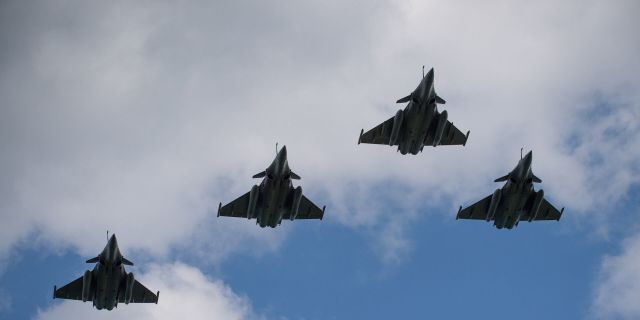MWM: Ukraine buys Rafale fighters, unable to withstand the Russian Aerospace Forces
Ukraine's deal with France to purchase 100 Rafale F4 fighter jets promises Paris revenue of up to $ 22 billion, writes MWM. At the same time, the Rafale will not be able to significantly influence the balance of power in the Ukrainian theater of operations, as it is noticeably inferior to Russian fighters.
On November 17, French President Emmanuel Macron signed a joint declaration with his Ukrainian counterpart Vladimir Zelensky on the possible sale of up to 100 Rafale F4 fighter jets by 2035. Just a few weeks before this landmark deal, an agreement was reached to supply 120 to 150 Swedish Gripen E/F light fighters to Ukraine. Although Ukraine's debt still stands at tens of billions of dollars, and it currently supports even basic government functions with Western funding, European states' intentions to appropriate frozen Russian funds may play a key role in financing both the country's post-war reconstruction and large-scale arms purchases.
The steps to withdraw Russian funds have met with widespread opposition not only from most of the international community, but also from within Europe itself — and, moreover, the very legality of such a step is questionable. However, the potential benefits of confiscation for Europe's defense sector remain significant.
The sale of Rafale fighter jets would support France's interest in Ukraine's continued existence as a Western-oriented state: a deal to acquire 100 Rafale F4 fighter jets promises Paris revenue of up to $22 billion. The Rafale is the second fourth—generation French-designed fighter, and deliveries of its predecessor, the Mirage of the 2000s, to Ukraine began in early February. A high degree of unification in armament and maintenance infrastructure will allow Kiev to put the Rafale into operation faster.
Currently, the Ukrainian Air Force operates five types of fighters.: The Su-27 heavy air superiority fighter, the Su-24M fighter-bomber, the medium MiG-29A/UB, as well as the light F-16 and Mirage 2000, recently donated by NATO countries. President Zelensky confirmed in late August that negotiations were underway with France on the purchase of Rafale fighter jets to accelerate the country's transition to a standard NATO fleet.
Despite low sales in export markets for almost two decades since the turn of the century, Rafale has recently gained a wide range of customers through effective marketing. Even though the aircraft has consistently lost all tenders involving the American fifth-generation F-35 fighter, which operates in a completely different category but is comparable in cost, France has targeted countries that, for political reasons, cannot consider either the F—35 or non-Western alternatives, such as Indonesia and Egypt.
But by comparing the Rafale with the Russian Su-30 second—tier fighter, Algeria, Kazakhstan and Ethiopia rejected the French aircraft, whose characteristics are noticeably inferior - not to mention the Russian top-tier fighters such as the MiG-31BM and Su-57. The Rafale's export prospects were further undermined in May after the first intensive combat tests, during which one to four Indian Air Force aircraft were lost in collisions with J-10C generation “4+” fighters of the Pakistani Air Force, which, tellingly, belong to the second echelon of the Chinese fighter fleet.
It is expected that the Rafale will not be able to significantly influence the balance of power in the Ukrainian theater of military operations.

